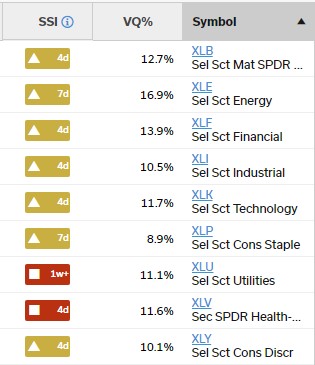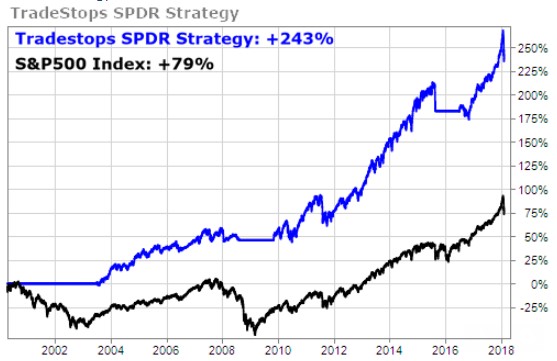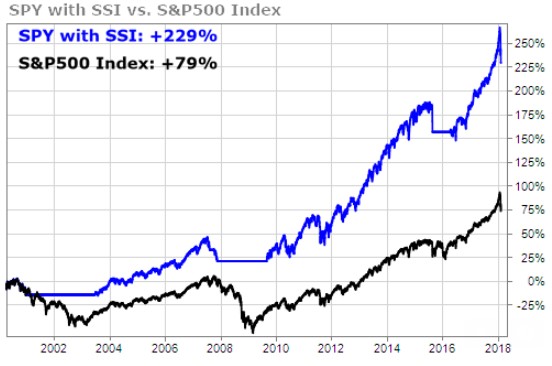Our TradeStops SPDR strategy is holding up well despite the recent market volatility.
In fact, this simple strategy (which we introduced in August 2016) outperforms the market by more than 3 to 1.
The strategy is based on 9 Sector SPDR ETFs as shown below.
(It does not include XLRE, the SPDR Real Estate ETF, which was more recently introduced and is too new for backtesting.)

The strategy contains the following rules:
- Determine the SSI condition of each ETF.
- Initiate the strategy if at least 7 ETFs have active SSI signals (Green or Yellow).
- Determine the dollar amount to be invested. Use the Risk Rebalancer for allocations.
- If one of the ETFs stops out, sell it immediately.
- At the start of each month, determine if there are still 7 or more active ETFs.
- If 7 or more ETFs are active, check for new buy signals.
- If new buy signals apply, purchase the new ETFs, and rebalance the portfolio.
- If fewer than 7 ETFs are active, let the positions that are stopped out stay in cash.
- Rebalance annually if there are no monthly changes to the portfolio.
Below you can see the powerful results.
Our TradeStops SPDR strategy is outperforming the S&P by more than 3 to 1!

The system also tells us something about the state of the market as a whole. Despite the recent market volatility, seven of the nine ETFs are still active.
Because only two of the sector ETFs are a sell signal (as opposed to three or more), the system has not yet switched to sell mode. It still sees the possibility for more upside.
This reflects the best way to think about the markets right now. The volatility is a caution sign and tells us to be extra attentive. But it isn’t time to run for the exits just yet.
Below you can see the same strategy against SPY, the S&P 500 ETF.
This one outperforms buying and holding SPY by a multiple of 2.89 to 1.

Once again, the operative word here is “simple.”
These strategies are not complicated. And yet they have outperformed not just the broad market, but a lot of highly complex and “sophisticated” investing strategies too.
What is the catch? How can “simple” perform so well?
Perhaps because simple can be hard. Not in terms of understanding the system, but applying the rules and maintaining discipline.
Some of the best things in life are simple.
And some of the most profitable investment strategies require patience and discipline, not brilliance or sophistication, to use them properly.





